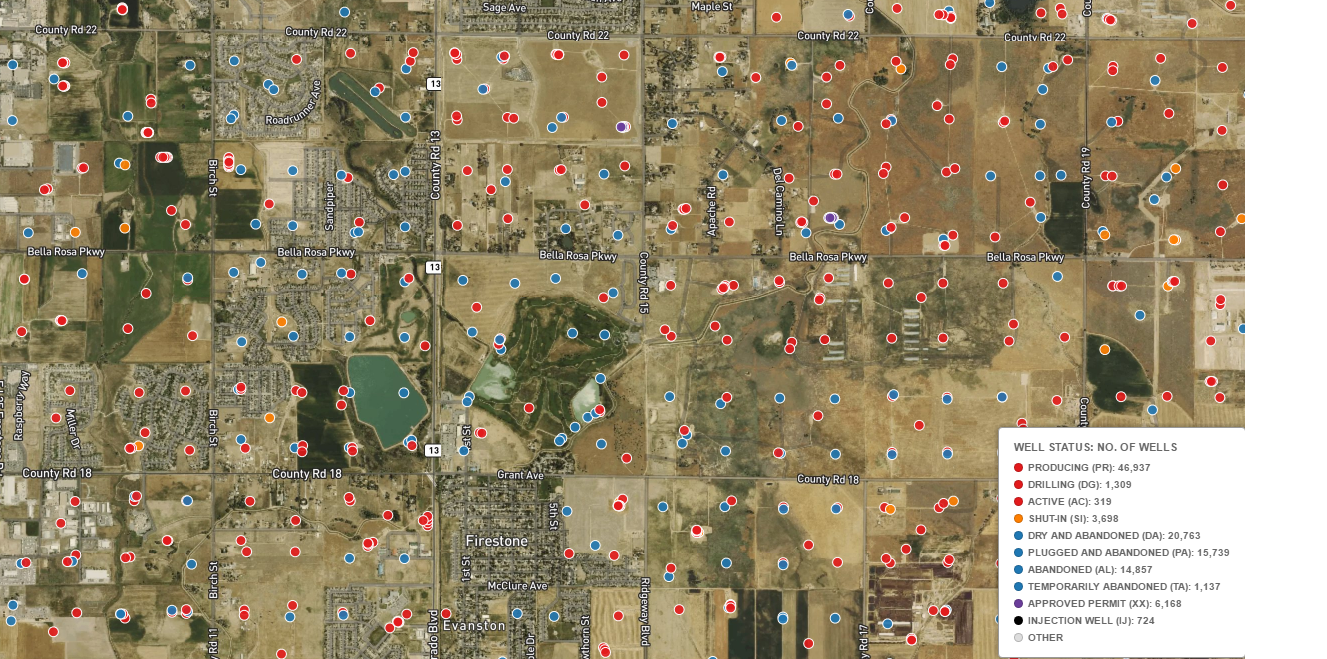Operators must test facilities within 1,000 feet of occupied buildings in next 30 days
Colorado has ordered thousands of wells and pipelines inspected after the fatal April 17th home explosion in Firestone, Colorado, set off a series of investigations, precautions and inspections by the local fire department, the Colorado Oil & Gas Conservation Commission, Anadarko Petroleum and Great Western Oil and Gas Company.
Cut flowline responsible for disaster
Investigators have determined that a cut flowline from a nearby gas well was the cause of the explosion in Firestone, which killed two and sent two people to the hospital.
Firestone Fire Chief Ted Poszywak held a press conference May 2 discussing the results of the investigation. Two gas flowlines originally connected the well to a tank battery nearby, and ran under the home, according to Poszywak. The tank battery was moved in 2002 to accommodate the housing development and the well’s production was rerouted. One of the old lines was cut and capped at the wellhead, but the second was not cut or disconnected from the well. At some point the uncapped flowline was cut near the foundation of the home, allowing gas to seep into the nearby soil, Poszywak said.
According to the Times Call, the well was drilled in 1993 by Gerrity Oil and Gas Corporation, acquired in 1997 by Patina Oil and Gas Corporation, acquired in 2005 by Noble Energy and finally acquired in 2014 by Anadarko. Low commodity prices led Anadarko to shut in the well throughout 2016, but the well was put on production again in January. The well was last inspected in 2014, before the destroyed home was constructed.
Hickenlooper calls for immediate round of operator inspections
In response, Colorado Governor John Hickenlooper called for a statewide review of existing oil and gas operations to prevent similar incidents. Operators must inspect and test all oil and gas flowlines within 1,000 feet of occupied buildings within the next 30 days, according to Governor Hickenlooper’s order. Lines not in use must be marked and capped, while abandoned lines must be cut 3 ft below the surface and sealed.
Numerous wells near developed areas
There are a total of 111,651 permitted, producing and abandoned wells in Colorado, according to the Denver Post. While it is not clear how many wells will be affected by this order, oil and gas and housing development have been close neighbors for years.
Dozens of wells are present in the above picture, representing approximately 18 square miles near the site of the disaster. The Denver Post has published a map of all oil and gas wells in Colorado, showing the large amount of development in the state—particularly evident in the Wattenberg field in Weld County north of Denver.
Several companies have already shut in wells for testing
Anadarko issued a statement on April 26 announcing that the company had shut in all its vertical wells in northeast Colorado, before the cause of the explosion was determined. According to the company these wells, over 3,000 in total, account for 13,000 BOEPD of production, about 75% of which is natural gas.
Several other companies preemptively shut in wells to test integrity. Great Western Oil & Gas said it would check 61 of its wells on April 28 in response to the tragedy. According to the company, the wells shut in have gas lines within 250 feet of occupied buildings, meaning that the company may need to test additional wells to comply with the Governor’s order.
Extraction Oil & Gas began inspection on Tuesday, before the state order was issued. The company began inspections on its wells, flowlines and facilities within 500 feet of occupied structures, a total of 178 wells.
Few Bill Barrett wells within 500 ft of structures
Not all DJ basin companies may be particularly affected by this order, though. In Bill Barrett’s conference call today, BBG President and CEO R. Scot Woodall commented, “that was an unfortunate tragedy, and obviously our company is an active member of that community and our thoughts and prayers go out to that family and that entire community on this incident. In terms of impact to our company, … . If you look, our properties sit to the northeast side of the field. We’re in a very rural area. Just to give you some comparisons, as this incident was unfolding last week, we went out and tested all the wells that we had that were less than 250 feet from an occupied structure and there are only four of those.
“We also went out and looked at the wells that we had within 500 feet and there are 11 wells. And so we really don’t fit in a municipality or in a rural environment, and obviously we want to be compliant with all of our testing and the COGCC put out some new guidelines last night that obviously we will execute on, but the overall impact to our base operations should be pretty small.”
The COGCC conducted a press conference on May 2 regarding the event and the actions that have been taken. The audio is available here.


